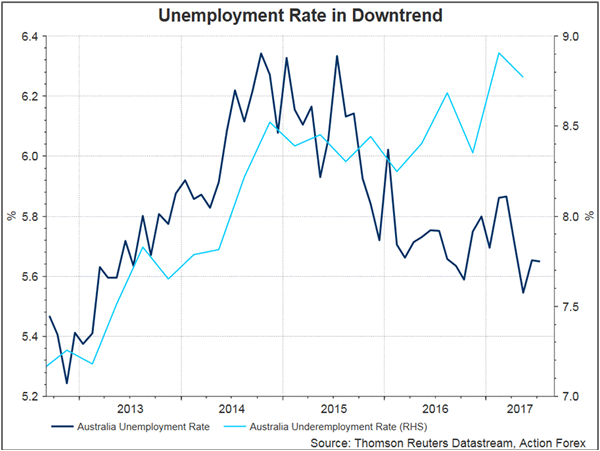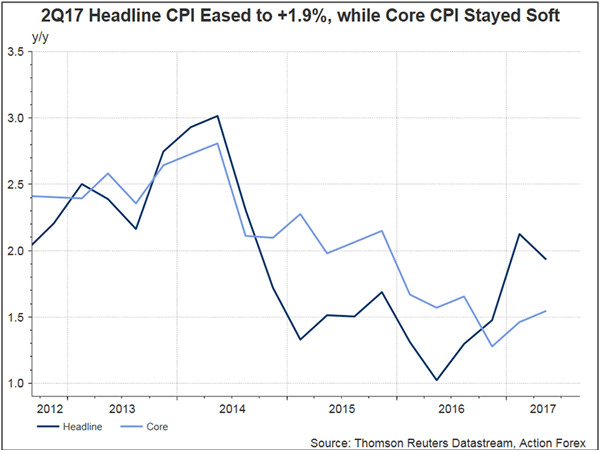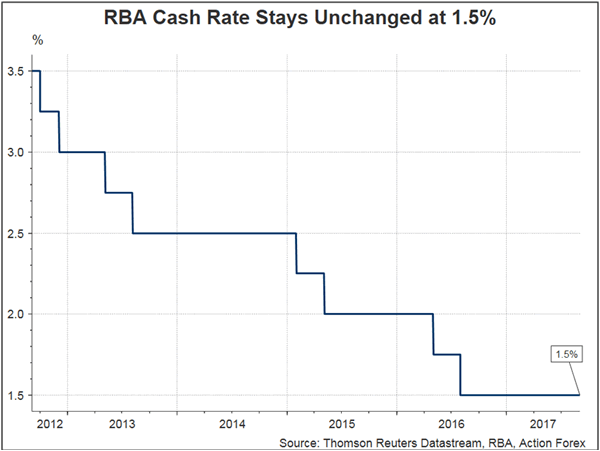As widely anticipated, the RBA left the cash rate unchanged at 1.5%, historic low since August 2016. Policymakers remained confident over the economic outlook, but stayed cautious over the strength in property prices. Again, they warned that recent appreciation in Australian dollar would weigh on the outlook for growth and employment, and prolong soft inflation. . It appeared that the central bank would keep its policy rate unchanged at the current level for some time.
The central bank retained the view that Australia’s economy would ‘gradually pick up over the coming year’ as ‘the decline in mining investment’ would end soon while ‘non-mining investment has improved recently and reported business conditions are at a high level’. On the job market, policymakers noted that employment growth ‘has been stronger over recent months and has increased in all states’ while different forward-looking indicators have pointed to ‘solid growth in employment over the period ahead’. However, wage growth has remained low. RBA believed that subdued wage growth would continue for some time, ‘although stronger conditions in the labour market should see some lift in wages growth over time’.


On the housing market, the RBA noted that ‘conditions in the housing market continue to vary considerably around the country. Housing prices have been rising briskly in some markets, although there are signs that conditions are easing, especially in Sydney. In some other markets, prices are declining’.
RBA acknowledged that AUD’s appreciation over the past months was partly driven by USD’s weakness. It reiterated the warning that ‘the higher exchange rate is expected to contribute to the subdued price pressures in the economy. It is also weighing on the outlook for output and employment. An appreciating exchange rate would be expected to result in a slower pick-up in economic activity and inflation than currently forecast’. While AUDUSD has been in consolidation since the last RBA meeting, the pair has gained +10% since the beginning of the year.














